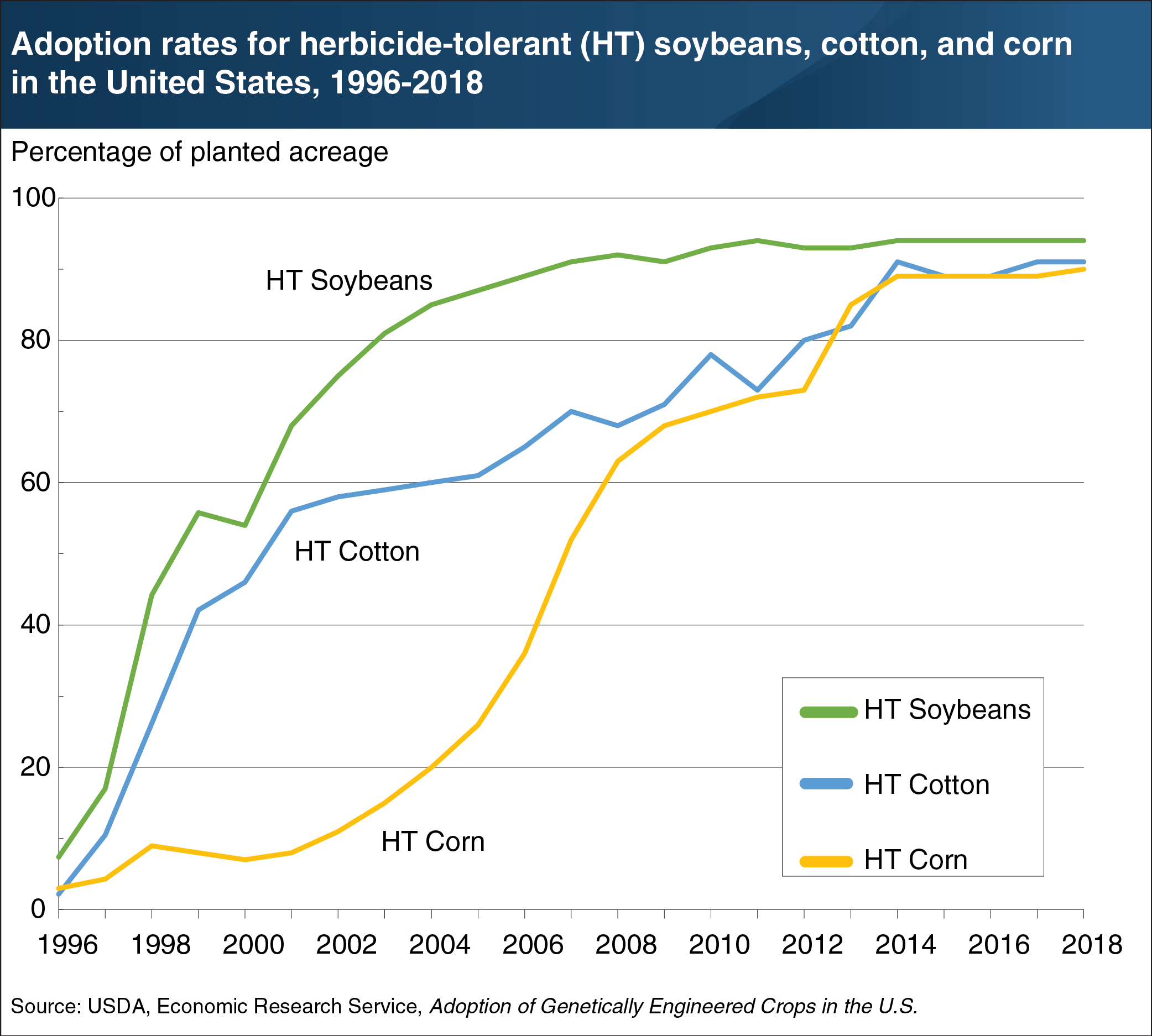Use of herbicide-tolerant seeds increased quickly following their commercialization, but plateaued in recent years
- by Seth J. Wechsler
- 2/28/2019

A genetically engineered (GE) plant has had DNA inserted into its genome using laboratory techniques. The first GE herbicide-tolerant (HT) crops, which can survive applications of herbicides like glyphosate or glufosinate that kill most other plants, were created by inserting genes from soil bacteria. Generally, the use of HT corn, cotton, and soybeans in the United States increased quickly following their commercialization in 1996. HT soybean use increased most rapidly, largely because weed resistance to herbicides called ALS inhibitors had developed in the 1980s. By comparison, HT corn use increased relatively slowly, perhaps because corn farmers could use the herbicide atrazine, an effective alternative to glyphosate that could not be applied to soybeans or cotton. The percent of acreage planted with HT corn, cotton, and soybeans has plateaued in recent years, partly because adoption rates for these seeds is already quite high and because weed resistance to glyphosate has continued to develop and spread. As the problems posed by glyphosate-resistant weeds intensify, crop varieties with new HT traits are being developed. For example, a new HT variety of soybeans that is tolerant of herbicides called HPPD inhibitors will be available to U.S. growers in 2019. This chart appears in the December 2018 Amber Waves data feature, "Trends in the Adoption of Genetically Engineered Corn, Cotton, and Soybeans.”
We’d welcome your feedback!
Would you be willing to answer a few quick questions about your experience?

